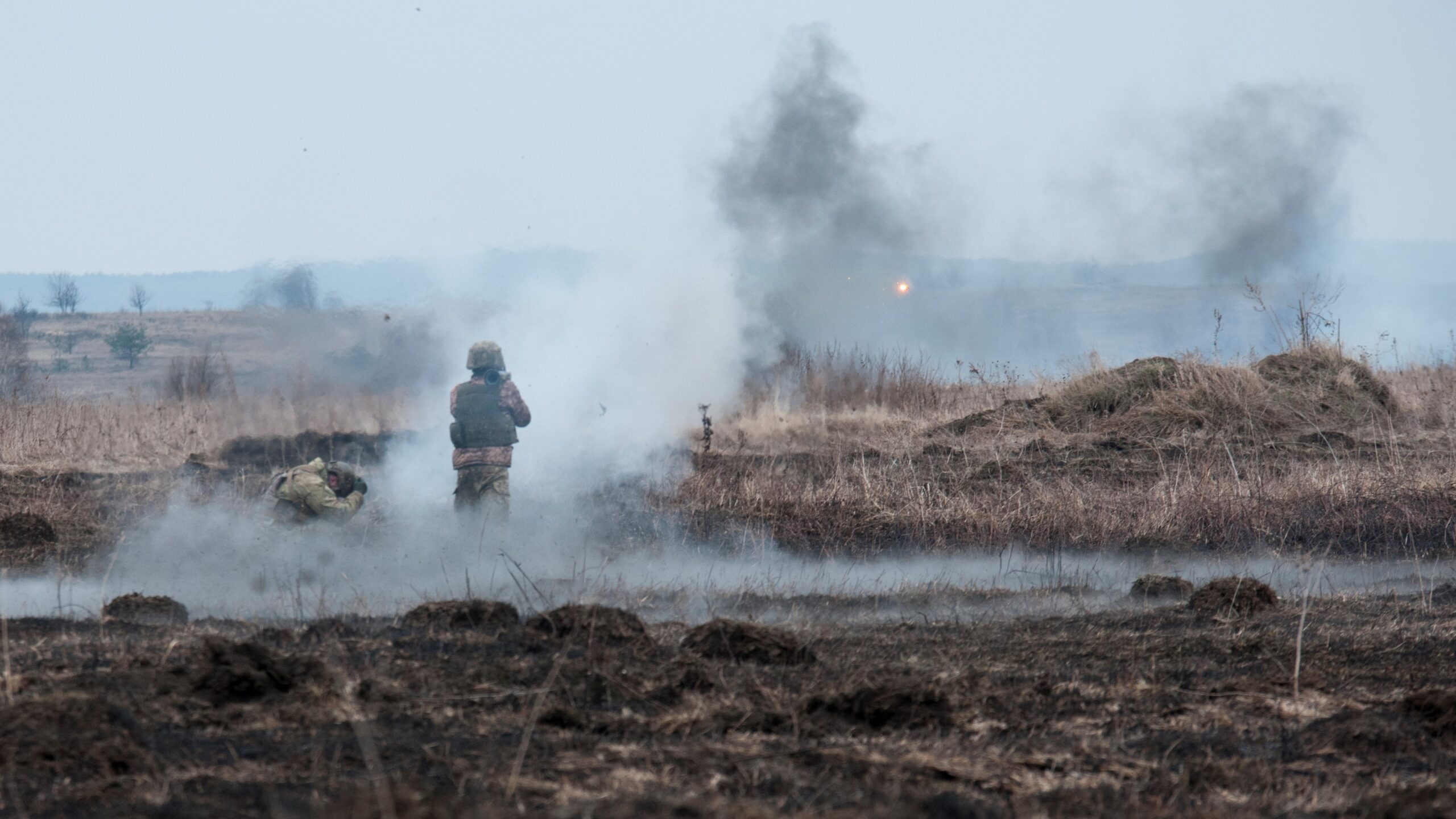
A Ukrainian soldier takes part in a 2017 live-field exercise. Despite Russia’s overwhelming military edge, Ukraine has maintained its C2 capabilities. (US Army/Anthony Jones)
WASHINGTON: Russia’s full-scale invasion of Ukraine is now a month old, and Ukraine’s stiff resistance has exposed wide issues with Russia’s perceived military dominance. While Russia’s military challenges are pervasive, one surprising situation sticks out to puzzled experts: the apparent lack of widespread use of advanced electronic warfare capabilities.
At the beginning of March, a senior defense official said that the Russian military had yet to use its “full scope” of EW, but stated that “we do have indications that in some places they have used EW to their advantage, particularly in jamming, at a local level.” Weeks later, the Pentagon still assesses that Ukrainian forces retain command and control of their military.
“The Ukrainians still have good command and control over their forces in the field in ways that the Russians actually don’t have,” Pentagon press secretary John Kirby told reporters on March 22.
That is not what many experts expected to happen, given Russia’s well-documented buildup of advanced electronic warfare platforms and its proven use in the 2014 invasion of eastern Ukraine’s Donbas region.
“I would have, prior to the invasion, assessed that Ukrainian logistics and command and control would be hampered, that UAVs would be targeted, quite extensively, and that they would struggle to coordinate a response against the Russian forces,” said Sam Cranny-Evans, a C4ISR research analyst at the London-based think tank Royal United Services Institute.
One of the reasons the Russians haven’t been able to use the full range of EW capabilities is because the Ukrainians are fighting an “irregular” war than what Russia’s EW systems are designed to challenge, said Bryan Clark, a senior fellow at the Hudson Institute. They’re dispersed, operating in much smaller units and using a combination of Western-supplied radios that the Russians aren’t necessarily able to detect easily.
He added that emissions from Ukrainian forces using their cell phones are also being caught up in other civilian emissions, making it harder for Russian forces to find Ukrainians in the forest of electromagnetic spectrum emissions.
Laurie Buckhout, a retired Army colonel who specializes in EW, told Breaking Defense that the non-contiguous battlefield could be impacting Russian decision-making on its electronic warfare capabilities. For example, in 2014 the battlefield had an obvious forward line of troops that allowed for the Russian military to jam without impacting their own communications. That’s made more difficult without a distinct forward edge and Russian forces trying to surround multiple cities.
“When you’re [the Russia military] trying to get into Kyiv and you’re trying to surround the city and there’s people all around you …you need to be a little more careful and more surgical,” Buckhout said. “So you’re not going to see some of the broadband, high range stuff that you saw the first time into Ukraine … because you’ve got now your own troops in that area.”
Russian military advances in Ukraine have largely stalled amid fierce Ukrainian resistance and significant logistical issues, including lack of fuel or getting stuck in the mud. For example, Buckhout said that Russia’s airborne EW system, like a helicopter with an EW payload, is only valuable if there is a capable ground attack.
“If you wanted to blind and deafen your enemy when you were about to go after him with heavy armor, you would have a helicopter up then,” Buckhout said. “But if your armor’s bogged down in mud or soldiers are surrendering or giving up their vehicles because they’re out of fuel, you’re not going to put your helicopters up to support that, because there’s not going to be a heavy armor attack. Why put your asset up there for it to be taken down if there’s not an operation worthy of it happening on the ground?”
What’s Being Missed?
Another question is how observers know that the Russian forces aren’t using electronic warfare — particularly given that it’s an invisible capability. Cranny-Evans explained that just because it’s not being observed, in part because “good EW” is very targeted, doesn’t mean it isn’t happening.
“You try and find a specific radio and you jam that specific radio, or you jam a number of radios in an area. You don’t take down everything because you need it as well,” Cranny-Evans said. “So I’m very reticent to say that we haven’t seen it because it’s not observed. And B, the Ukrainians will be the last to admit that they’re having problems communicating.”
According to a 2017 report from the International Centre for Defence and Security, Russia’s EW portfolio is geared toward challenging NATO communications, radars, unmanned aerial vehicles and other sensors. For Sergey Sukhankin, a senior fellow at Jamestown Foundation, Russia’s lack of extensive use of its EW capabilities is showcased by Ukraine’s success using Bayraktars and other types of killer drones.
Ukrainian drones have “managed to derail at least part of the supplies of fuel and other important commodities, and basically, Russia was unwilling or unable … to deal [with] it,” Sukhankin said.
However, experts said Russia will likely increase its use of electronic warfare as the war progresses. Clark said the Russia military is “adapting and learning” to new radios used by Ukrainian forces and how they can be jammed.
“So I think what we’re going to see in the EW world is just a steady increase in the use of EW by Russian forces, because at this point, the EW capabilities that they have… been using in the past are mostly designed around ground force operations,” Clark said. “I think you’ll see more and more of that, especially the use of UAVs because I think early on they were reticent to use a lot of their UAV-based EW systems because the Ukrainians had a bunch of these air defense systems [and] stinger missiles.”




















